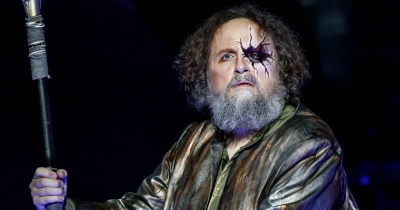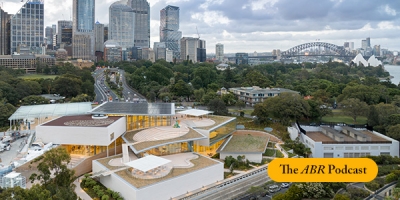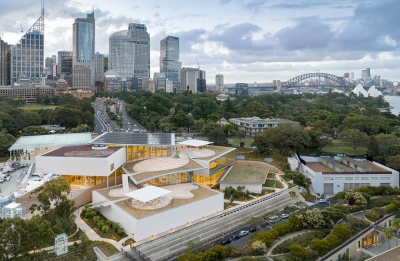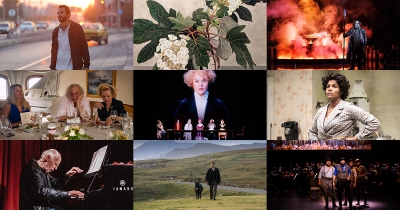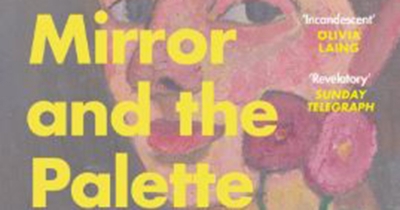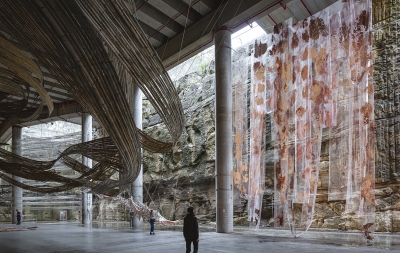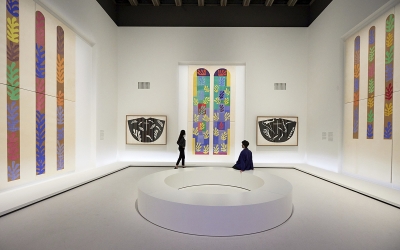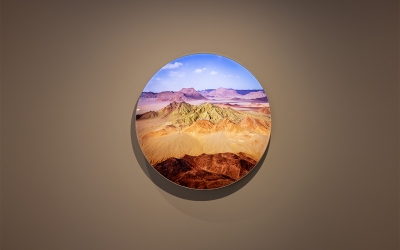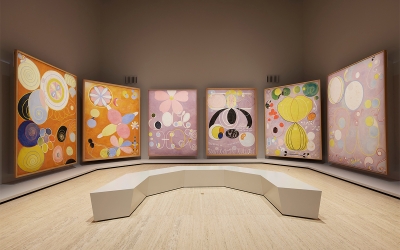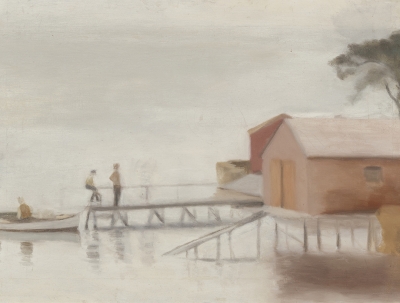Julie Ewington
To celebrate the year’s memorable plays, films, television, music, operas, dance, and exhibitions, we invited a number of arts professionals and critics to nominate their favourites.
... (read more)In December last year, the Art Gallery of New South Wales launched its Sydney Modern project, the centerpiece of which was an extraordinary new building overlooking Sydney Harbour. Sydney Modern has received mixed reviews, some lamenting that it seems to have been designed as a chic backdrop for Instagram selfies. In this week’s ABR podcast, Julie Ewington, an arts curator and broadcaster, describes her first encounter with Sydney Modern in a piece titled ‘Lyrical layers at AGNSW’, published in the April issue of ABR.
... (read more)To celebrate the year’s memorable plays, films, television, music, operas, dance, and exhibitions, we invited a number of arts professionals and critics to nominate their favourites.
... (read more)The Mirror and the Palette: Rebellion, revolution and resilience: 500 years of women’s self-portraits by Jennifer Higgie
The twenty-third Biennale has been highly anticipated through two long years since Brook Andrew’s twenty-second Biennale suddenly closed in March 2020 as Covid took hold of the country, not to reopen for three months.
This year’s guiding idea, rīvus – meaning stream, but embracing rivers, fresh water, saltwater, lagoons, banks, confluences – is peculiarly topical, as water resources, in both scarcity and flood, become every year a more urgent issue.
... (read more)This exhibition, alive with colour, is a gift to our grey summer. The Art Gallery of New South Wales (AGNSW) was already crowded at 10.30am on the first Sunday; our umbrellas were bagged, our raincoats cloaked. Matisse: Life and spirit, drawn mainly from the exceptional holdings of the Centre Pompidou in Paris, is the first dedicated Matisse exhibition in Australia for twenty-six years. The Gallery carefully says this is the ‘largest collection of work by Matisse to be seen in Sydney’, but that understates the appeal of this lovely exhibition. It offers an incisive, intelligent, and thorough introduction to Matisse that is essential viewing; its generosity and subtlety will repay multiple visits. (I wish I were a kid again, could see Matisse for the first time.)
... (read more)This splendid exhibition is named for Doug Aitken’s three-channel video NEW ERA (2018), which revisits Martin Cooper, the elderly American inventor of the mobile telephone and his first call on the device in 1973. The video is set in a mirrored hexagonal room at the Museum of Contemporary Art in Sydney, its multiplying reflections fracturing and confounding place and time, wrapping around visitors. The work neatly encapsulates American artist Doug Aitken’s interests: how do humans and their technologies sit in the natural world? Importantly, how do we use these technologies to see the world we live in, to make it meaningful? The idea recurs throughout Aitken’s art and writings; it is manifested in the mirrors that incorporate us in his works.
... (read more)Hilma af Klint: The Secret Paintings
Hilma af Klint: The Secret Paintings is attracting steady crowds at the Art Gallery of New South Wales (AGNSW). Perhaps enthusiasm is too ebullient a word for the pervading mood of reverence, but clearly Hilma af Klint’s newly minted reputation preceded her. The humming scrutiny is silenced in the famous double-height space in Andrew Anderson’s 1972 building: ten enormous abstract paintings, each more than three metres high, surround viewers in an installation not unlike the temple that the artist originally planned for them. Remarkably, The Ten Largest were painted in 1907, part of The Paintings for the Temple project between 1906 and 1915 that eventually comprised 193 paintings. This ambition and scale were not seen anywhere else at that time: the phenomenon that is af Klint is rewriting the history of modern art.
... (read more)Clarice Beckett: The Present Moment
Bells and whistles are common enough, in both form and content, in contemporary exhibitions. This time they are actual, sonic: a soundscape of birdsong, a Melbourne tram bell, clopping horses’ hooves floating through Clarice Beckett: The Present Moment, which is at the Art Gallery of South Australia (AGSA) until 16 May. It’s lovely, subtle, complementing a revelatory encounter with an artist whose work is, through Tracey Lock’s enchanting exhibition, about to become far better known.
... (read more)
